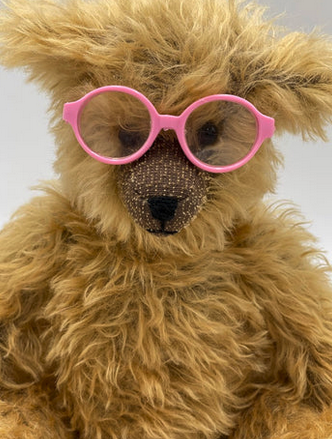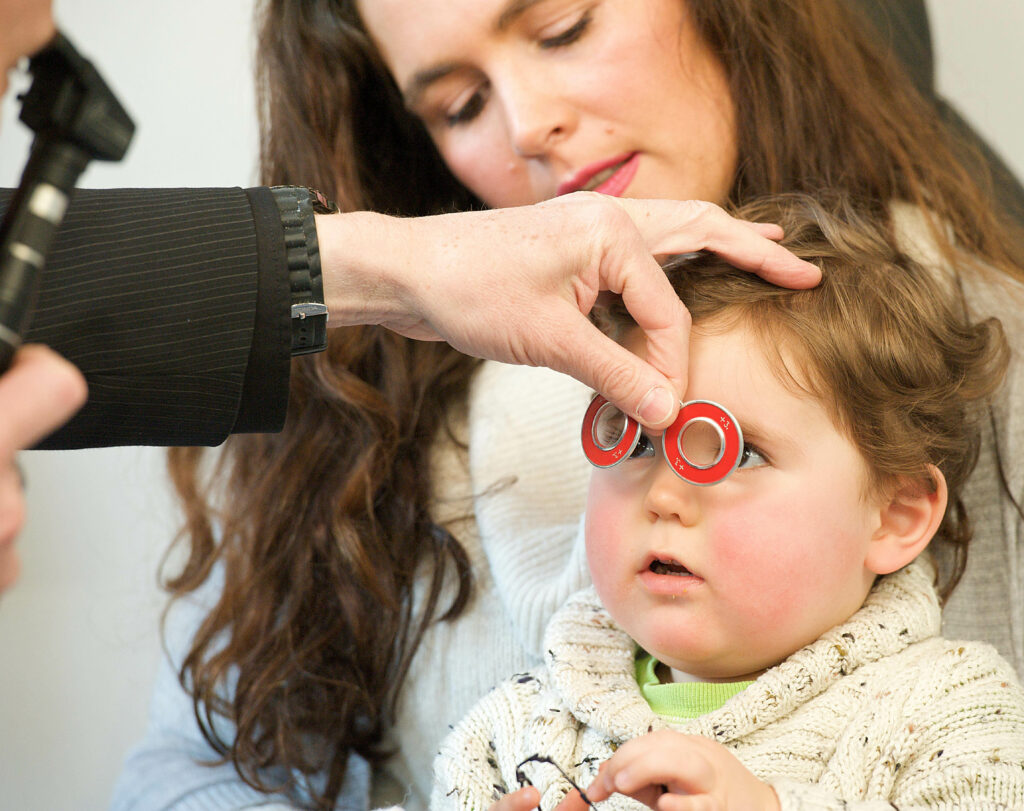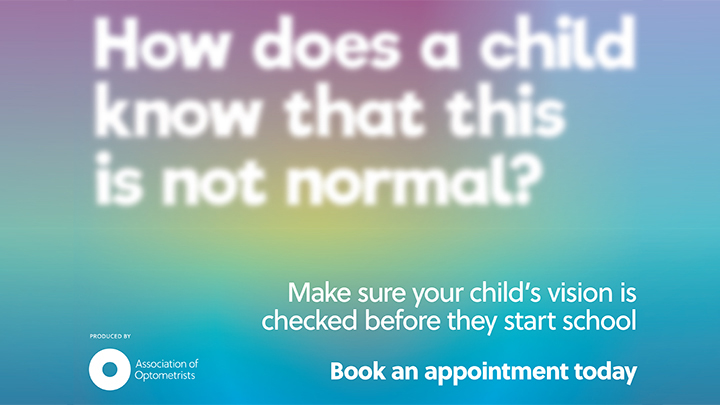Childrens eye examinations
The optometrists at Spybeys are specialists at examining childrens eyes – they have many years of experience and all the equipment required to examine children of all ages. If you have any questions, please contact us.
The importance of childrens eye exams
While it is common practice for health visitors to conduct a brief vision screening at your child’s annual review, it is important to emphasize that these screenings are not a substitute for a thorough examination performed by an optometrist.
Optometrists utilize specific clinical and diagnostic tools and assessments to determine your child’s ocular health and visual abilities. Since many learning skills are dependent on the strength of visual skills such as binocular vision, accurate eye movements, the ability to see distant objects, etc., doctors recommend that children have their first eye exam even before reaching school age.

Vision screenings vs. comprehensive eye exams
Many schools conduct vision screenings to identify any vision problems that may affect a child’s ability to learn.
Even if your child has passed a school vision screening, it is still strongly recommended to schedule a comprehensive eye examination. Vision screenings do not check for all the vision problems that can affect children.
When should my child have their first eye exam?

Optometrists recommend that children have their first eye exam between the ages of 2 – 3yrs, to ensure that their eyes are developing normally. If you have any concerns then examinations can be carried at earlier ages. After this initial visit, annual eye examinations are recommmended.
What to expect: Your child’s first eye exam
When meeting with your child’s optometrist for the first time, be prepared to answer questions about your child’s birth history (including any complications during pregnancy or delivery), birth weight, and whether they were born full-term.
The optometrist, will also ask questions regarding family history of ocular disease, and your child’s medical history— including previous eye problems, treatments or surgeries, current medications and any allergies they may have.
Be sure to tell your optometrist about any delay in motor development, and if you have noticed:
- Frequent eye rubbing or blinking
- Difficulty maintaining eye contact
- Poor tracking skills
It is also important to mention if your child has failed a vision screening conducted by their school or pediatrician.

Eye examinations for preschool children
At this age, children are learning to color, draw, cut paper, stack blocks, build with Lego pieces, play with balls, and more!
A comprehensive exam for preschool children usually includes a series of tests for:
- Visual acuity
- Lazy eye
- Stereopsis (3D vision)
- Eye tracking
- Convergence
- Colour vision
- Ocular health
All of these visual skills are vitally important for the healthy development of an infant and to prepare them for the school years ahead.
Young children are constantly learning new skills that will prepare them for when they learn to read and write. Visual skills, such as, visual perceptual skills, eye-hand coordination, fine motor skills, etc., are also essential for learning and academic success.
If you notice that your child is showing any signs of developmental delay, or if your child has difficulty recognizing shapes, colors, numbers, or letters, inform your optometrists — a developmental delay may signal a vision problem.
Picture charts are used to test visual acuity for young children who are unable to identify the letters on an eye chart. These symbols include an apple, house, car, plane. Your child will be asked to identify these symbols, allowing your eye doctor to measure how well your child sees both near and distant.
Random dot stereopsis measures your child’s 3D vision— this is an indication of how well your child’s eyes work together. This test uses a chart with special patterns of dots and 3-D glasses.
Assessment of visual skills to rule out the presence of:
- Amblyopia— also known as lazy eye
- Strabismus— also known as crossed-eyes
- Convergence insufficiency— the inability to view near objects easily
- Focusing difficulties
- Poor depth perception
Color vision is examined using pictures with specific colors to determine if your child can discriminate between colors— the most common assessment is called the Ishihara Test.
Retinoscopy is a technique used to obtain an objective measurement of a refractive error. The doctor uses a retinoscope to shine light into the child’s eye, and then observes the reflection (reflex) off their retina. This test measures any refractive error such as myopia, that might be affecting your child’s vision.
Ocular examination of the health of your child’s eyes, including the cornea, iris, lens, retina and eyelids. This will also allow your eye doctor to rule out any ocular problems.